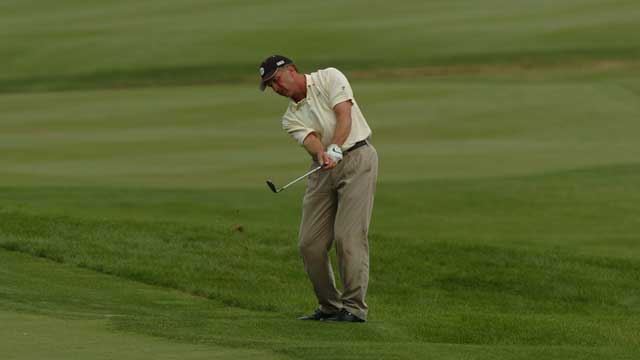Here’s what we cover:
My story originally appears on PGA.com on 11/19/21
Having a solid short game is paramount to shooting lower scores. These shots, which include chipping, pitching and bunker play, combined with fuller shots from 100 yards and in, take up as much as 70% of all the shots taken during the course of a round. Focusing on becoming proficient in short game shots will surely help to lower your total score significantly.
Today I wanted to focus specifically on pitching.
The idea of a pitch is to execute a shot that has more rise over run, meaning the ball will be in the air more than it is on the putting surface, rolling out to your target. A pitch will require a much bigger and fuller controlled swing than is required with a chip… and because of this, there is more a chance for error in executing a pitch. Practicing your pitching technique on a regular basis will help you become much more proficient and will reduce the chances of hitting thin or heavy shots.
Deciding when to hit a pitch over a chip really depends on your lie and where the pin is in relation to where your ball lies. In general, if a lie is good, you are fairly close to the green, and the pin is some distance away, I would suggest a chip.
Conversely, if you happen to have a more difficult lie, are a ways from the green or the pin is cut close, you will need to rely on a pitch shot. You will be using your most lofted clubs for hitting pitches…your 60-degree, 56-degree, 52 degree or similarly lofted wedges.
Pitching Set Up
For pitching, widen your stance a bit, and open up to your target line a little more than you would with a chip. Your weight distribution will be roughly 50% – 50%. The ball position will be more towards the center of your stance.
In this scenario, as mentioned above, your intention is to carry the ball more towards your target and have little roll out. This is why a more lofted club such as a 52, 56, or 60-degree wedge is necessary. That exact club selection all depends on the distance necessary to carry the ball to your intended landing point.
Pitching Motion
For pitching around the green, you will use the rotation of the body, with the feeling of the arms, and club being very connected to the body, acting as the driver of the swing with this shot.
In the backswing, you will rotate your shoulders and core back, much like you would in a full swing. During this, you will impart a slight degree of wrist hinge….this will help in delivering the club a little more steeply into the ball on the downswing. This will launch the ball high which is the general intention of this type of shot.
It is important to maintain your wrist hinge through impact and have the hands and shaft leading through impact. Fight the urge to try and help the ball get up by “scooping” or lifting it. The loft of the club, if delivered into the ball correctly will do this and you do not need to “help” by scooping. Your hands and club will exit slightly left as your body rotates towards your intended target. Keeping the body rotating and moving, with good tempo and some degree of momentum is critical in the execution of a pitch.


